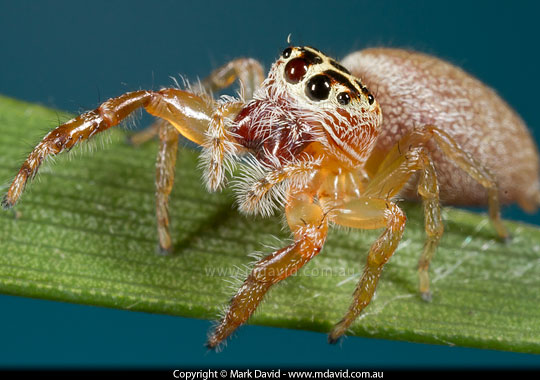
The Latest Pics Archive — page 4
Photo 34
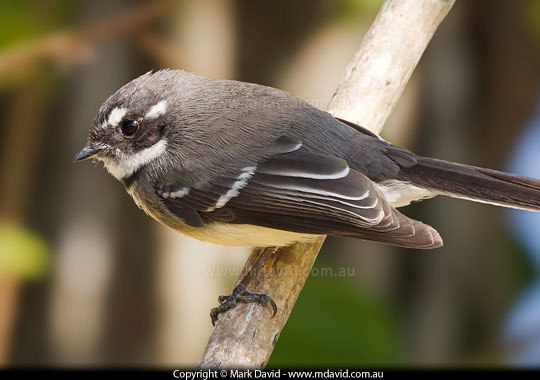
A Grey Fantail (Rhipidura fuliginosa) perched in a patch of sunlight. The Grey
Fantails is an active bird, regularly fanning its tail and then flying from branch to
branch. To get this shot I waited near the bird with my lens focused on the branch until
the bird’s natural curiosity took over, at which time it perched long enough for me
to get this shot. It soon became even more inquisitive and started flying right up to
within inches from my face, but unfortunately I wasn’t quick enough getting focus to
be able to get a shot of that.
Grey Fantails are found throughout Australia and often announce
their presence by their repetitive chirping.
Photo 33
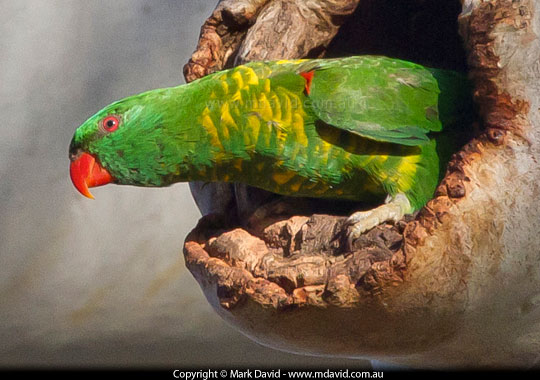
A Scaly-breasted Lorikeet (Trichoglossus chlorolepidotus) peers out from a nesting
hollow high up in an old gum tree. Nesting hollows like these are left behind as scars where
old branches have died and fallen off.
Falling branches can leave an almighty dent in a house, and you sure
don’t want to be standing under one either. Yet the hole left behind in the tree is
of great value to many species of animals, including birds. So this presents itself as a
bit of a dilemma for city councils. While most councils don’t want to stop wildlife thriving
and breeding in their municipalities, they also don’t much like the idea of extremely heavy
branches falling onto perfectly innocent rate-payers. So in the city, more and more branches
are removed long before they look like falling, and this is resulting in a shortage of decent
nesting hollows in towns and suburbs.
So it was nice to see this hollow, complete with a pair of birds, during
a recent country stroll.
Photo 32
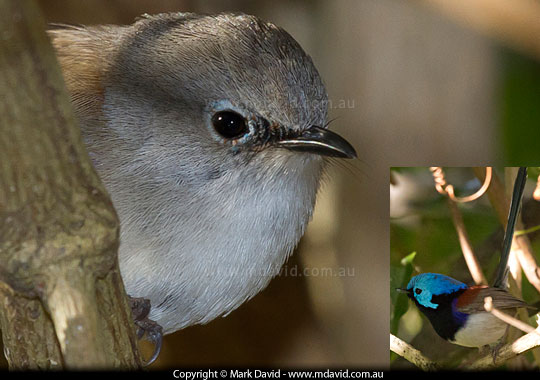
Last week it was a Superb Fairy-wren. This time it’s a Variegated Fairy-wren
(Malurus lamberti) shown peeking out from behind a branch. It’s a common
assumption that all the drab-looking fairy-wrens are females, which is hardly fair because
the non-breeding males can look mighty drab too and closely resemble the females and younger
birds. In fact, the black beak on this one shows that it’s a male.
It’s only when the male bird grows its breeding plumage (inset) that they get
the spectacular colours for which they are well known. So, while all the brightly coloured
ones can safely be said to be males, it is not correct to say that all the drab ones are
females. Variegated Fairy-wrens are distributed across most of Australia.
Photo 31
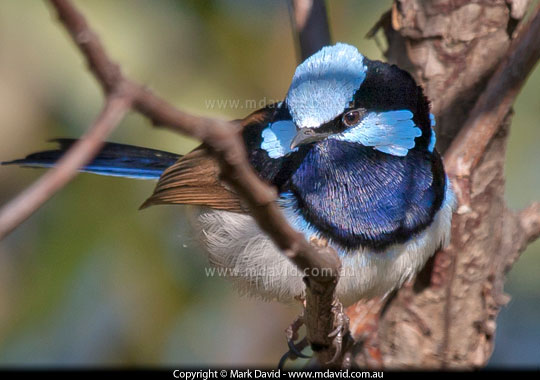
A male Superb Fairy-wren (Malurus cyaneus) decked out in full breeding plumage
always makes an impressive display. This one was in Sydney.
Photo 30
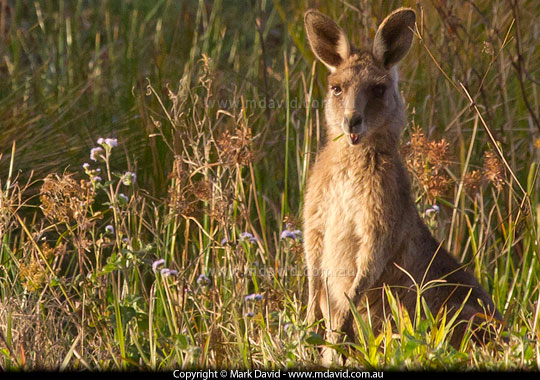
An Eastern Grey Kangaroo joey pops its head up from the grass. While taking this shot, its
mum was nearby, watching me very carefully.
Photo 29
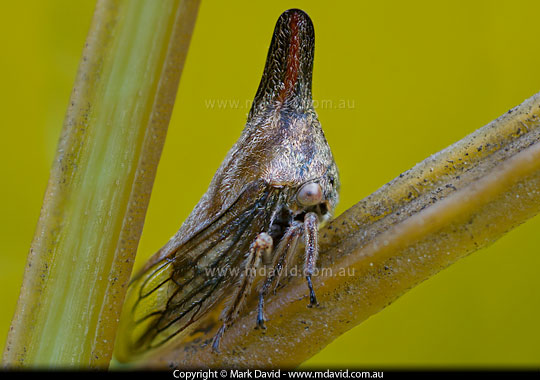
A Lantana Treehopper (possibly Aconophora compressa) on the stem of a Fiddlewood
tree. Lantana Treehoppers were released in NSW and Queensland to help reduce the vigour of
infestations of the weed Lantana (Lantana camara). Qualifying as a
true bug these little guys have mouth parts
modified for sucking sap. They will often cover the stems in very large numbers, leaving
the branches sticky from honeydew.
Photo 28
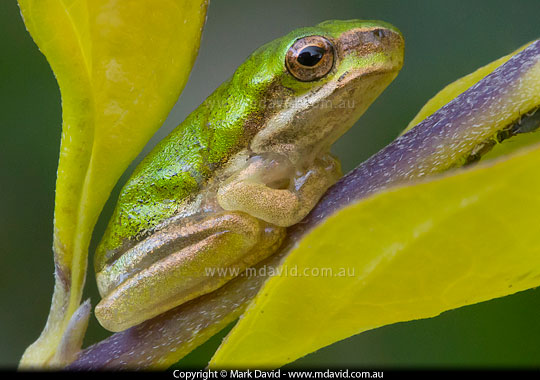
An Eastern Dwarf Tree Frog, Litoria fallax. Fully grown they are about an inch
long. This one was only half that. Photographed in south-east Queensland.
Photo 27
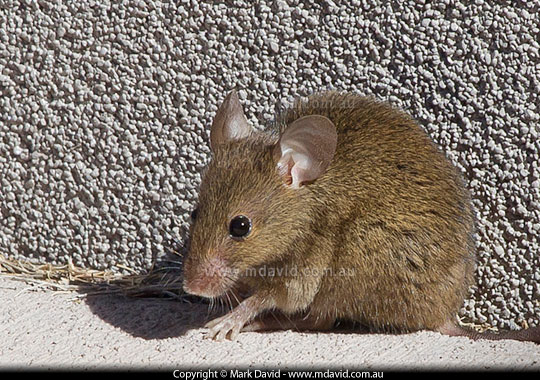
Large areas of Australia have been experiencing a particularly bad mouse plague lately.
This one was running around the edge of a house in the middle of the day, in south-east
Queensland.
Photo 26

This photo shows about as much of a smile as you’ll ever see on a Cane Toad.
Cane Toads are an invasive pest species deliberately introduced to Australia in a
botched attempt to control a critter called the Greyback Beetle. You see, the larvae of
Greyback Beetles were munching their way through sugar cane, much to the disappointment
of the farmers, and so it was assumed that a giant toad with a voracious and undiscerning
appetite would eat the larvae and solve everyone’s problems. Unfortunately, in their
enthusiasm to release the toads, people failed to appreciate the fact that Cane Toads
can’t climb and they can’t fly. Instead, they spend their entire lives on the
ground or in water. And so the Cane Toads weren’t able to get up to the top of the
sugar cane plants where the beetle larvae were.
Years later, we are now faced with a problem of how to control the Cane Toads. Even as
I type this, the toads continue to spread across northern Australia, along the way proving
themselves to be
ineffective
at killing Greyback Beetles, but mighty efficient at killing the native wildflife, both
large and small. They eat the little critters like frogs and invertebrates, and poison
released from sacks on their backs kills any predator that tries to swallow the toads whole.
By the way, if you want to know the humane method for killing Cane Toads you can find it
here
on the RSPCA’s website.
Photo 24

Up close and personal with a European Wasp
Photo 23

An Asian House Gecko pauses on a sheet of paper. These lizards are an introduced species
in Australia, probably accidentally brought into the country as stowaways inside shipping
crates. For such a little lizard they make a remarkably loud call, often described as a
‘chuck, chuck, chuck’ sound. They can also run, fast, up smooth surfaces
like bare walls and glass windows. As they scamper up a wall you might hear a very distinctive
padding sound as large numbers of microscopic structures under their feet grip and then
release from the surface at high speed. They feed on insects and spiders.
Photo 22
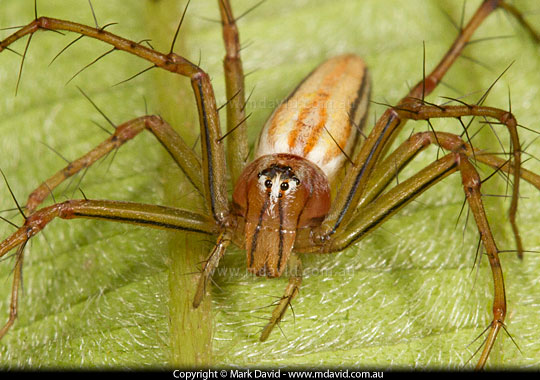
A Lynx spider, photographed in happier times than those depicted last week
Photo 21
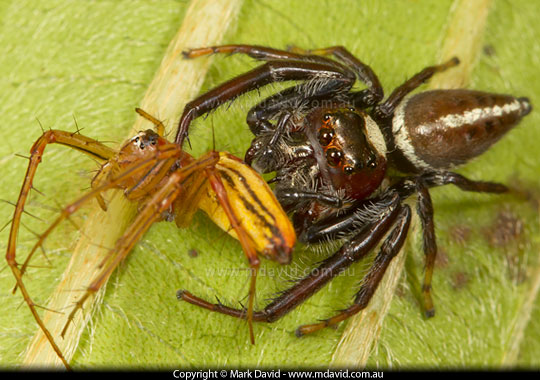
A jumping spider feeding on a Lynx Spider. Both types of spiders use speed, agility and
excellent eyesight (for a spider) to capture their prey.
Photographed in south-east Queensland.
Photo 20

An Australian Raven (Corvus coronoides) demonstrating poor oral hygiene after
feasting on some carrion. Photographed in Sydney, NSW.
Photo 19

It can run but it can’t hide. This tree frog is working hard to avoid being noticed,
by squeezing itself into a corner on a wall. Photographed in south-east Queensland.
Photo 18
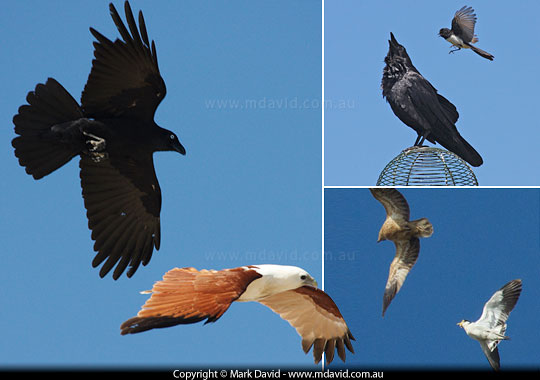
Last week I ran a photo of a Noisy Friarbird chasing a Crow. This week it’s more bird chases
between different bird species. And again, it’s the smaller birds chasing the larger
ones. Birds which are known to sometimes prey on young birds are often chased away by the parents
although sometimes small birds chase and harass larger birds that posed no threat at all. Clockwise from
left: Torresian Crow (Corvus orru) chasing a Brahminy Kite (Haliastur indus);
Willy Wagtail (Rhipidura leucophrys) harassing an Australian Raven
(Corvus coronoides); Masked Lapwing (Vanellus miles novaehollandiae) chasing
a Brahminy Kite.
Photo 17

A Noisy Friarbird (Philemon corniculatus) in hot pursuit of a Torresian Crow
(Corvus orru) in south-east Queensland.
Photo 16

There be dragons — or at least, one really little one. This fellow is a very young
dragon lizard and it was small enough to require my macro lens to capture this portrait.
Its full length was only about 28 cm long and more than two thirds of that was tail. There
are 70 species of dragons known in Australia, which is about 70 more than I can identify
with any accuracy.
Photo 15
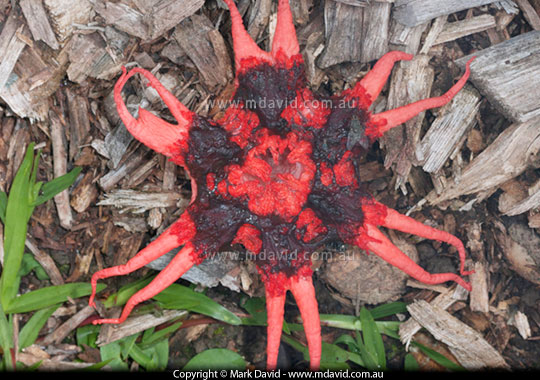
Some weeks back I had a pic of a Latticed Stinkhorn. The charmingly named stinkhorns are
a type of fungus that uses the smell of rotting meat — or worse — to attract
flies in order to spread spores. Here’s another stinkhorn. This one is an Anemone
Stinkhorn. If you look carefully you’ll see a fly at the base of one of its
‘arms’, which will give you an impression of size.

Birds

Reptiles

Plants

Insects and spiders

Nature words

Other stuff










